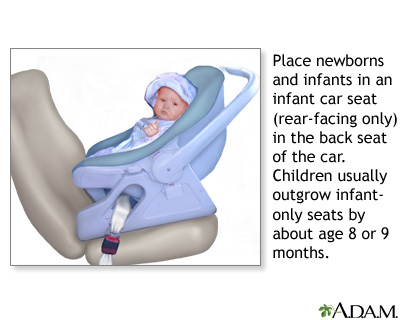
Overview
A rear-facing car seat position is recommended for a child who is very young. Extreme injury can occur in an accident because of the immaturity of the bones and ligaments in the neck if the child is facing forward. In a frontal crash, a child's head and neck are subjected to great force as the body is strapped in place and the head and neck are pulled away from the body. The head and legs of the child are thrown forward like a rag doll and extreme forces are put on the spinal cord of the child. In a frontal crash, a rear-facing car seat is best, because it cradles the head, neck, and back of the child causing less injury. Therefore, the rear-facing position is recommended for as long as possible for very young children.
Review Date 1/17/2025
Updated by: Charles I. Schwartz, MD, FAAP, Clinical Assistant Professor of Pediatrics, Perelman School of Medicine at the University of Pennsylvania, General Pediatrician at PennCare for Kids, Phoenixville, PA. Also reviewed by David C. Dugdale, MD, Medical Director, Brenda Conaway, Editorial Director, and the A.D.A.M. Editorial team.


